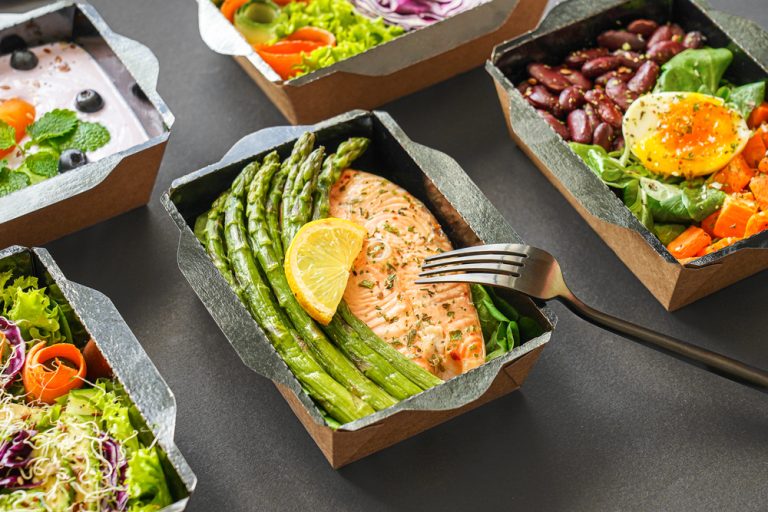
Seniors and Diabetes
According to the American Diabetes Association, one in four people over the age of 60 is diabetic. Diabetes is a health condition where the levels of glucose in a person’s blood are too high. Glucose comes from the food we eat, and our cells need glucose for energy. Our bodies produce insulin to help our cells absorb glucose. The glucose in our diets comes mainly from the carbohydrates we eat, such as bread and white rice, flour tortillas, starchy vegetables, and sugary foods.
With Type 1 diabetes, the body does not produce insulin, and with Type 2 diabetes, a resistance to insulin builds up gradually over time. Whichever type a person has, a proper diabetic diet should be part of a healthy lifestyle that keeps blood sugar at an optimal level. This decreases the risk of serious complications such as loss of vision and heart problems.
Diabetic Diets
You might believe that seniors with Type 2 diabetes need to follow a low-carb diabetic diet. But this isn’t always the answer. Some individuals may need a moderate or higher amount than you’d expect. Seniors who do a lot of physical activity need more carbohydrates than someone who is sedentary. Those with a naturally bigger build also have higher energy needs and may need to consume more carbs. In some cases, a person recovering from surgery and going through rehabilitation may also temporarily need more carbohydrates. Seniors with diabetes must also be mindful of maintaining a healthy weight and blood pressure and paying attention to their heart health. Working with a medical professional will help them achieve these goals through diet, exercise, medication, insulin, or a combination of these.
The Consistent Carbohydrate Diet
What is a diabetic diet that works for low or moderate carbohydrate needs? At FellowshipLIFE, we follow an effective approach that’s called the consistent carbohydrate diet.
When following this diabetic diet, a senior will work with our registered dietitian to calculate their energy needs. They learn how many carbohydrates to eat each day and at each meal. Planning what to eat in this way takes away guesswork and worry, and allows seniors to precisely track their carbohydrate intake for the day. It keeps their blood sugar in their target range and reduces the risk of complications from a spike or a dip in blood sugar. Here’s how to recognize the danger signs of hypoglycemia (low blood sugar) or hyperglycemia (high blood sugar).
Understanding portions.
Knowing the difference between serving size and portion size is very important in a diabetic diet. Serving size is an actual measurement; for example, eight ounces or one cup of milk equals one serving size. Portion size is the amount of food you choose to eat.
American portion sizes at restaurants have increased dramatically over the decades. One portion can easily equal three or four servings. People tend to eat what they’re given, so controlling the serving size on your plate will help control the amount of carbohydrates, protein, and fat on your plate.
Luckily, you have a handy measuring tool to use at every meal: your hand.
- Your cupped hand: Represents one to two cups of nuts or pretzels.
- Your fist: Represents about one cup of fruit or vegetables.
- Your palm: Your palm (without fingers) represents 3 to 4 ounces of meat, fish or poultry.
- Your thumb: From base to tip, your thumb represents 1 ounce of meat or cheese. From the first joint to the tip, it represents one tablespoon measure.
- Your finger: From first joint to tip, it represents a teaspoon measure.
Getting the Right Help
Planning balanced meals that fit your carbohydrate needs, budget and tastes can be challenging. It helps to work with a professional dietitian trained in managing seniors’ health, and who can assist in creating a healthy meal plan.
At FellowshipLIFE, residents in Independent Living, Assisted Living, and other levels of living find navigating meal choices easier with the support of Heather Lamson, R.D., our on-site registered dietitian & nutrition care manager. She assists seniors managing diabetes with education such as identifying the best and worst foods for diabetics; she also offers one-on-one coaching and meal planning.
A highly trained professional, Heather considers all the factors that affect blood sugar levels. She says that managing blood sugar levels isn’t just about managing carbohydrates. Most seniors with diabetes don’t focus enough on protein and fiber in their diet. These two things help to maintain blood sugar levels for an extended period, preventing spikes or dips to prolong a normal level.
Heather works closely with our culinary team and can provide detailed information for each meal being served. This makes her recommendations more effective than general advice from an off-site physician or nutritionist. It’s a personalized service that makes managing a diabetic diet plan much easier on a day-to-day basis, and it’s completely free to our residents.
Making healthy choices easier.
Senior Director of Culinary and Catering Services, Rich Mercado, says that nutrition is complicated for seniors. We provide the means for our residents to meet their goals, but believe that personal choice is important. We provide guidance and nutrition for those residents that want it. And if someone has diabetes, we can support them with a consistent carbohydrate diet that helps manage their diabetes in conjunction with their physician and any medications they may be taking.
At Fellowship Village, residents can dine as they want while making healthy food choices. Nutrition information is printed on menus and on posters for meals served that day. Our friendly team members are always on hand to assist with dietary preferences or with special needs such as a diabetic diet.
Contact us to learn about nutrition support at Fellowship Village, and how we personalize it to benefit you or your loved one.




